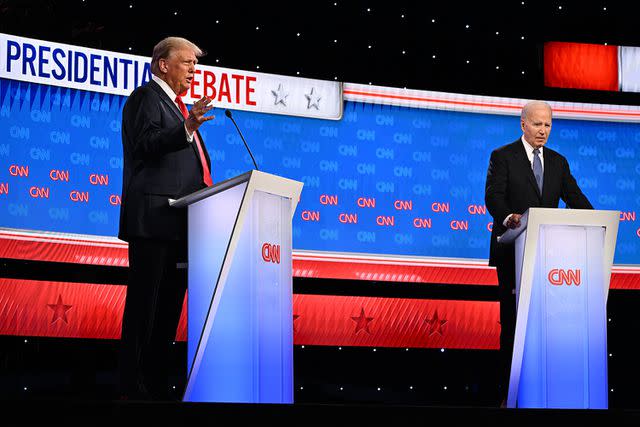Bucks County Courier Times
House budget calls for $2T in cuts. Could Bucks County SNAP, other programs see impacts?
Chris Ullery and Riley Beggin – March 3, 2025
The Republican-led House passed a federal budget resolution Tuesday night as the GOP seeks to pass one “big, beautiful bill” rolling President Donald Trump’s legislative agenda into the spending plan.
The proposal passed by a near party-line vote of 217-215 sets up a reconciliation bill that includes extending Trump’s 2017 tax cuts while implementing new ones at a cost of $4.5 trillion, but also requires lawmakers to find $2 trillion in spending cuts over the next decade.
House Democrats, like Pennsylvania’s 4th District Rep. Madeleine Dean, of Lower Merion, have called the tax cuts a “betrayal of the middle class” and will be offset by programs that millions rely on, including Medicaid and SNAP, the food assistance program formerly known as food stamps.

“In Pennsylvania, nearly three million people rely on Medicaid’s Medical Assistance and CHIP for healthcare — including 39% of all the Commonwealth’s children, 47% of adults with disabilities, and 64% of people living in nursing homes,” Dean wrote in a Facebook post explaining her vote against the resolution Tuesday.
Republican leadership have pushed back on that notion, saying that enough savings can be found through implementing work requirements and rooting out waste.
House Speaker Mike Johnson said Tuesday that Republicans are “committed to preserving Medicare benefits for those who desperately need it, deserve it, and quality for it. What we’re talking about is rooting out fraud, waste, and abuse.”
Locally, U.S. Rep. Brian Fitzpatrick, R-1, of Middletown, seemed to echo Johnson’s comments in a statement on his website saying the “procedural” vote is one of many steps in developing the budget.
“The word Medicaid is not mentioned or addressed anywhere in this procedural bill. We will continue to keep a close eye on these deliberations as they continue, to ensure that the interests of our PA-1 community are protected,” Fitzpatrick said.
Fitzpatrick’s office did not return request for comment on if he would oppose a bill that cut Medicaid or how much of the $2 trillion in spending cuts could be covered by alleged “fraud, waste and abuse” cited by Johnson.
Does the resolution cut Medicaid and SNAP?
While the resolution doesn’t specifically mention Medicaid, SNAP or student loan assistance programs, groups like the nonprofit Tax Foundation say those programs are likely to face some reductions in the face of massive spending cuts.
The proposed spending plan directs multiple committees to cut billions of dollars, including an $880 billion reduction from the Energy and Commerce Committee — which has broad jurisdiction over numerous programs including Medicare, Medicaid and Social Security.
Trump has already ruled out signing off on cuts to Medicare and Social Security, which makes Medicaid likely to see cuts, according to a report from the foundation.
The Education and Workforce Committee, which has jurisdiction over education programs, school lunch programs and work requirements for Temporary Assistance for Needy Families (TANF) program, would be directed to cut $330 billion. The Agriculture Committee, which has oversight over farm programs and the Supplemental Nutrition Assistance Program, would be required to cut $230 billion from programs under its jurisdiction.
Senate passes its own bill: Senate passes Republican border security bill without Trump tax cuts
The cuts were added to the resolution as a last-minute effort to bring members of the ultraconservative House Freedom Caucus on board with a plan that raised the debt ceiling by $4 trillion, increased defense and border security spending by $300 billion and would add almost $3 trillion to the federal deficit over 10 years.
Republicans hold a narrow 218-215 majority in the House, which meant that the GOP could lose support from just one of its members for the vote to pass.
Rep. Thomas Massie, R-Ky. was the lone GOP no vote.
SNAP and Medicaid recipients in Pennsylvania
If Republicans can’t find all of their spending cuts in alleged wasteful spending, changes to SNAP and Medicaid could affect millions of Pennsylvanians, according to data from the state’s Department of Human Resources.
The number of SNAP recipients in Pennsylvania has held steady at about 2 million people each month since October 2023 and as of last month’s reported totals. About 1.97 million people used SNAP in January 2023.
Over that same period, the total benefits sent out to people in eligible low-income households have decreased by about $5.3 million, from $367 million to $362 million in January.
In Bucks County, an estimated 48,710 individuals received more than $8.7 million in SNAP assistance in January, an increase of about 2,000 people and $244,000 compared to October 2023.
Medicaid data from the human services department, which includes TANF, General Assistance and aid for people with disabilities, only provides a breakdown of total recipients and how many were under 21.
About 3 million Pennsylvanians received some form of assistance in the Medicaid data in January, down from about 3.6 million people two years ago.
While the total amount of people have dropped, the percentage of underage recipients has increased statewide, from almost 40% in 2023 to 42% last month.
Philadelphia, the state’s most populous city, has more people using Medicaid than any other county, but only 39% of the 673,869 people enrolled are under 21.
Bucks County has followed the same trend as the state since 2023. About 42% of the 112,121 recipients reported in January 2023 were under 21 compared to 44% of 90,778 recipients last month.
In January, Bucks County ranked 10th for most residents receiving Medicaid and the 13th highest percentage of recipients under 21.
About 46% of the 120,926 people receiving Medicaid in Montgomery County were under 21, the third highest county in the state for percent of under 21 recipients and the fourth highest for total recipients.
Almost half of the 59,712 people enrolled in Medicaid in Chester County are under 21, the highest percentage in the state and 14th highest for total enrolled.

















